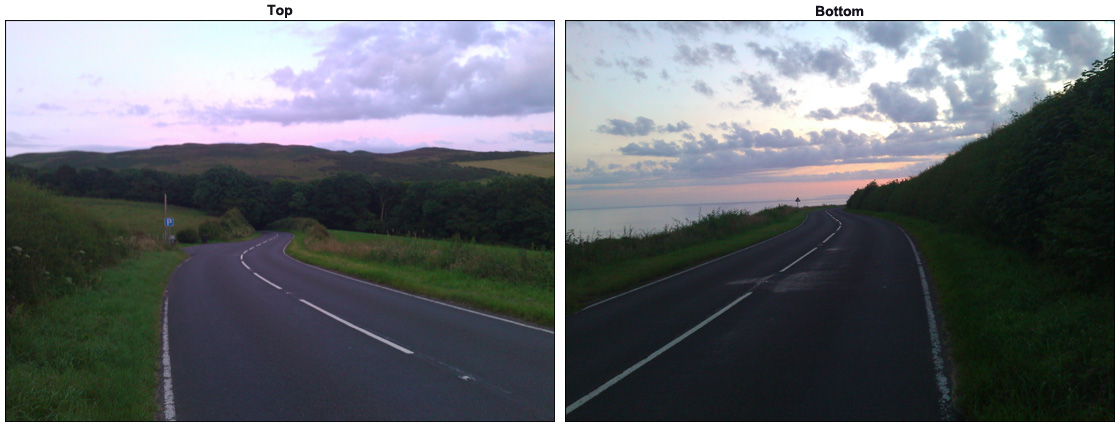
The Electric Brae, known locally as Croy Brae, is an antigravity hill on the A719, between Drumshrang and Knoweside, on the south-west coast of Scotland.[a]Brae is a Lowland Scots word for the slope or brow of a hill. It is an optical illusion caused by the layout of the land through which it runs, making it seem as if a freewheeling vehicle is drawn uphill by some mysterious “magnetic” attraction.[1] A key element of the illusion at the Electric Brae appears to be a misperception of the horizon by the observer, caused in part by the hills in the background.[2]
Similar antigravity hills, also known as spook hills or magnetic hills, are found across the world. Most are relatively narrow, short stretches of road, 50–90 metres in length, set in a hilly landscape with no surrounding buildings;[2] the Electric Brae is relatively long, at about a quarter of a mile (400 m) in length.
Notes
| a | Brae is a Lowland Scots word for the slope or brow of a hill. |
|---|

